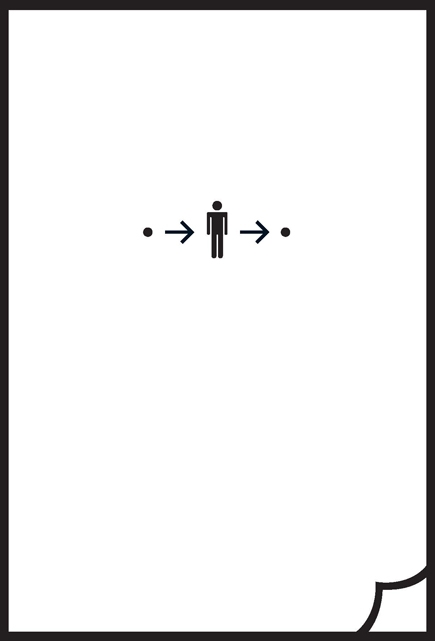From Point to Point, part of Xu Bing’s wider project Book from the Ground, is a 112-page novel depicting 24 hours in the life of an ordinary office worker, Mr Black, from seven one morning to seven the next, as he wakes, eats breakfast, goes to work, meets friends, looks for love online and goes out on a date. The book has punctuation marks, but no text; in place of words there are pictograms, logos, illustrative signs and emoticons, all taken from real symbols in use around the world. The artist has collated these over a period of seven years and used them to devise a universal ideographic language, in theory understandable by anyone engaged with modern life.
On one level Xu achieves his goal: it doesn’t take too much effort for the reader – ‘interpreter’ might be more appropriate – to decipher the central character’s day. Mr Black decides what shoes to wear (Lacoste, Adidas, Nike logos) and what to have for lunch (McDonald’s arches, illustration of a steaming steak/bowl of noodles/ sushi). He becomes increasingly stressed (series of anxious-face emoticons, each shedding an increasing number of drops of sweat) preparing for a work presentation. There’s humour, too, some of it slightly odd and scatological, as when Mr Black is straining on the toilet (coiled turd with a red line through it, more sweat-shedding emoticon faces). But perhaps this merely reflects the universality of toilet-related symbols. The accompanying explanatory book, The Book About Xu Bing’s Book from the Ground, includes documentation of the wider project when it has been presented in the context of an exhibition, and includes its development as a software program that translates Chinese and English text into pictograms and symbols. Essays and an interview with the artist put the novel in context, both in terms of Xu’s previous work and in terms of historical and more recently devised pictographic languages – not forgetting that the Chinese also retains pictographic roots.
pushing the literary possibilities of an existing language is not the same as attempting to tell a story through simplified signs and symbols
In relation to Xu’s previous work, Book from the Ground is a companion piece to one of his best-known works, Book from the Sky (1987–91), the four-year project in which he created 4,000 ‘fake’ Chinese characters, which he hand-cut into wooden blocks and printed within books and on scrolls. Instead of attempting a language understandable to everyone, here he created a language that was understandable by no one. When considering the implications of a global language for an increasingly global world, Xu’s project is a highly relevant one. But when considered within the context of language and literature, the arguments become more problematic, particularly when, in his introductory essay, Mathieu Borysevicz discusses From Point to Point alongside James Joyce’s Ulysses (1922). As an overarching narrative, both books may be the story of a day in the life of one man, told over 24 hours, but pushing the literary possibilities of an existing language, as Joyce was doing, is not the same as attempting to tell a story through simplified signs and symbols. The artist himself is the first to acknowledge the limitations of his project by stating, in his interview in The Book About…, that the desire to ‘pursue a dream that all humans can communicate freely without difficulty is a dream too big to realise’. The limitations of From Point to Point as literature are particularly highlighted when reading its English translation, given in The Book About… Here’s an excerpt: ‘Mr Black gets up, shuffles over to the bathroom and sits on the toilet for a long time. “En…er… ugh…en…” as much as he tries nothing comes out. “What’s wrong down there?” He ponders.’ Compare that to a few lines from Ulysses. ‘Stephen closed his eyes to hear his boots crush crackling wrack and shells. You are walking through it howsomever. I am, a stride at a time. A very short space of time through very short times of space.’ Try expressing that in pictograms and smiley faces.
This article was first published in the Spring/Summer 2014 issue of ArtReview Asia
